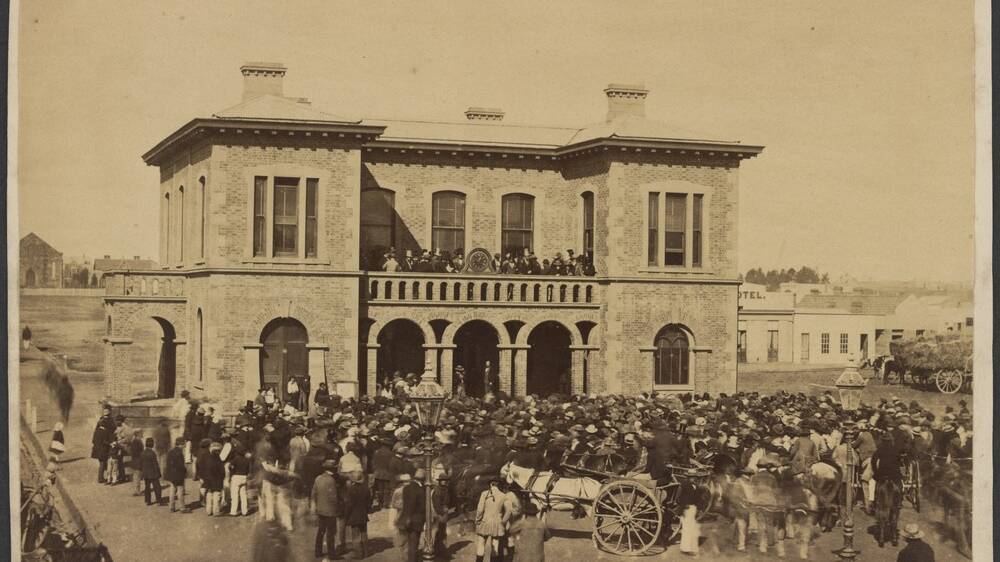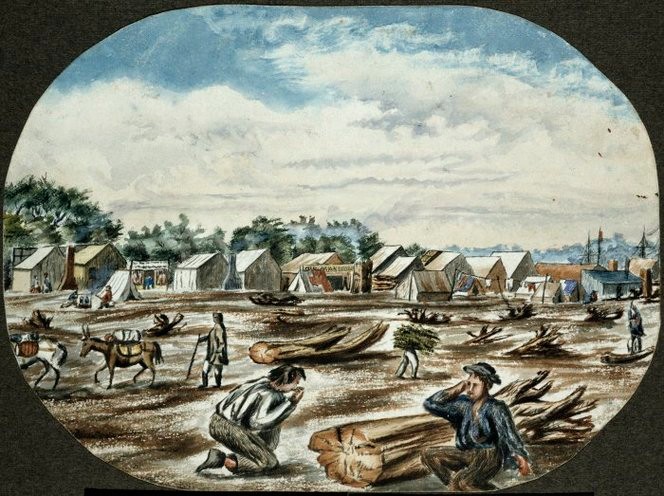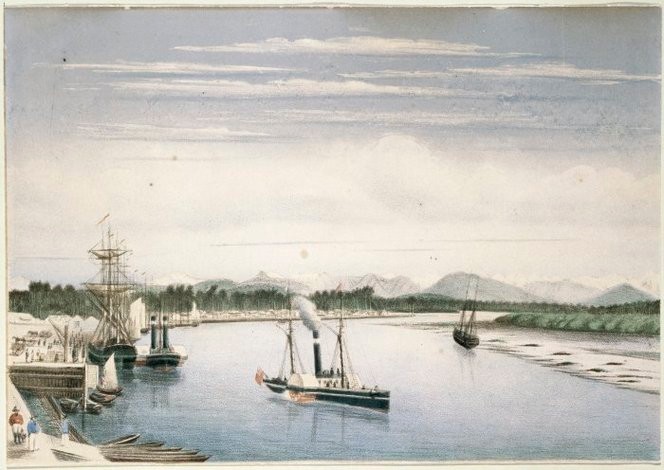In the 1911 census, Alf was still at home in Leicester (in full time employment), aged 23. Tom was just 13 and still at home. George and Frank were both at the Aldershot barracks.
George and Frank, 1914
 |
| Frank Gurr, 1st Jan 1912 |
Both had clearly signed up as "career" soldiers, as this was long before the outbreak of war. The 19th Hussars was a cavalry regiment — elite soldiers, the cream of the crop. In the earlier Boer Wars, they had been decisive; few armies could stand up to a full-blown cavalry charge.
But as they would discover, this was to be a very different war. The most advanced weapon in the Boer Wars was a single shot rifle with a 10-round magazine. WWI introduced high-velocity ammunition, grenades, machine guns, gas, flamethrowers, ballistic long-range heavy artillery and air warfare. Against this — particularly against machine guns — the cavalry were no longer the devastating force they had once been.
 |
| George Henry Neal Gurr |
 |
| Frank Cyril Gurr |
The father of Irish TV presenter, Gabriel (Gay) Byrne was also in the 19th Hussars at the outbreak of the war. An RTE TV special "Gay Byrne: My Father's War" broadcast in 2014 follows the 19th Hussars through the war. I have a DVD of the programme, courtesy of the director, happy to share on request. The most interesting excerpt is available by clicking here.
When war was declared on 4th August 1914, the 19th Hussars were stationed at Hounslow. Both George and Frank were allocated to B Squadron. On the 18th they departed for France as part of the 4th Cavalry Brigade under the direction of Major General Allenby (Allenby was later posted to Palestine where he became part of the legend of Lawrence of Arabia).
The story of their first few weeks of the war is told in a diary kept by a Sergeant in B Squadron: the first week largely idyllic, then all hell breaking loose in Rouen on the 26th. Two days later at St. Quentin the diary reports:
Over the next week they encountered friendly fire, spies, witnessed British troops shot for disobeying orders, saw bridges destroyed, lost a third of their men and almost half their horses, saw the beginning of the air war with some of the first dogfights, and surprised an encamped German cavalry regiment killing all those who did not escape. On the 4th September they had their first rest on the banks of the River Marne at Gournay-sur-Marne, swimming in the river and washing their clothes."Refugees are now pouring through this town and it is a most pitiful sight to see them. Some are carrying babies in their arms, others pushing prams or carrying bundles. They have left their homes and all they possess to the mercy of the Huns."
 |
| la Rue du Not, at the point of attack |
from the village of le Vautron towards Sablonnières, Frank's troop came under machine gun fire from across le Petit Morin river. The Germans had largely pulled out of Sablonnières but had left a few divisions behind to cause as much trouble as possible. Frank was cut down and killed, alongside a comrade. His brother George would not have been far away.
The machine-gun post was across the river, firing through a slit or "meutriere" in the wall that can still be seen today:
 |
| Wooden lintels reinforcing the horizontal machine gun slits can be seen in this wall - click for more |
The location is shown in two contemporary sketches of the battlefield:
 |
| Grave of Pte. F. C. Gurr |
Frank is buried in a small cemetery in Sablonnières. Each year, on Armistice Day, the inhabitants still give thanks to those soldiers who lost their lives liberating their village.
The 19th Hussars were later formed into dismounted divisions, taking part in hand-to-hand bayonet combat in the trenches at the 2nd Battle of Ypres in 1915.
Sources:
- http://1418bd.free.fr/labase/dosmonumsablonnieresbritsept14.pdf
- http://www.qdg.org.uk/diaries.php?dy=43
- Correspondence with Denis Lochuarn, local historian in Sablonniéres
Alf and Tom, 1916
 |
| Alfred Ernest Gurr |
Conscription was launched in January 1916 and required eligible single men to either enlist, attest, or be automatically enlisted on 2nd March.
Tom joined the Staffordshire Yeomanry on 11th May, and so presumably had attested either in 1915 or at the start of conscription. It's likely that he was part of the mounted troops in the 1st line of the 1st Staffs Yeomanry and so posted to the Egyptian campaign in 1917, taking part in the battles of Gaza.
Conscription was extended to married men in May. Alf joined the Leicester Regiment at some point in 1916 (exact date unknown) and was enlisted into the 6th Battalion.
 |
| Tom Gurr in Hospital Blues, 21 Dec 1918 |
But Tom, who had been gassed, was honourably discharged as unfit for service in 1919 and awarded the Silver War Badge alongside his Victory Medal and British Medal. Gas shells had been widely used in Gaza — by British Forces. He suffered from a weak chest for the remainder of his life.
George, 1918
By the beginning of 1918, George was now a Lance Corporal. The 19th Hussars was part of the 9th Cavalry Brigade, itself part of the 1st Cavalry Division. Still operating largely as a mounted division, they sometimes formed a dismounted unit and served in the trenches. Such it was on the 24th - 25th March, in the first Battle of Bapaume.
The Germans had mounted their Spring Offensive on the 21st with "Operation Michael". Over 3.5m shells were fired in 5 hours, concentrated on rear areas to destroy artillery and supply lines, while trench mortars, mustard gas, chlorine gas, tear gas and smoke canisters were concentrated on the trenches. It was designed to break through the Allied lines, seize the Channel ports and drive the British Army into the sea. This action ultimately failed, leading to an Allied counter-offensive in August and the end of the war in November.
Most of the battle was fought on the wasteland that had been left by the first battle of the Somme in 1916.
The men were exhausted, hungry, sleep-deprived and shell-shocked. An officer wrote:
 |
| Somme trench, 1918 |
"What remains in my memory of this day is the constant taking up of new positions, followed by constant orders to retire, terrible blocks on the roads, inability to find anyone anywhere; by exceeding good luck almost complete freedom from shelling, a complete absence of food of any kind except what could be picked up from abandoned dumps."
George lost his life here on 25th March 1918, aged 30. According to the official regimental war diaries, due to various trench parties being dispatched in different directions he could have been anywhere in the Somme valley between Frise in the east and Bussy-lès-Daours in the west. His body was never identified and probably never recovered. Along with 14,000 other casualties from the Somme between March and August 1918 with no known grave, his sacrifice is commemorated at Pozieres Memorial near Amiens.
Postscript
The play, "Journey's End," by R. C. Sherriff is set in the period 18-21 March 1918, in the run-up to the start of Operation Michael. Alf's son Alan, a keen amateur actor, appeared in the play as Osborne at the Leicester Little Theatre in 1973. Hamish, Alan's great-grandson, also played Hardy in a production at Durham University in 2016. A film based on the play was released in 2017 and at the time of writing is available on most paid streaming services. If you want to understand more about the mood of the troops at the time, there is no better way.
 |
| Alan Gurr as Osborne (R), 1973 |
 |
| Hamish Inglis as Hardy (R), 2016 |







.jpg/800px-StateLibQld_1_172927_Rangitoto_(ship).jpg)


























